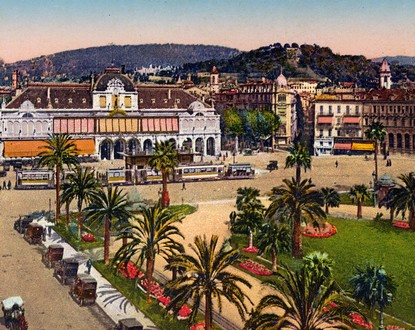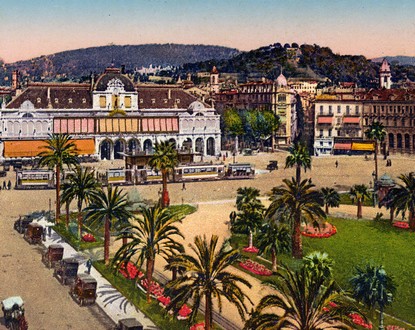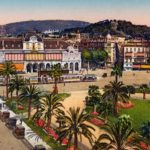“Newborough: the English neighborhood of the Croix-de-Marbre” is the theme of the conference that will open this cycle on Saturday, February 4, 2012, at 3 PM, at the Theatre of Photography and Image in Nice. The history of this neighborhood will be developed by Judit Kiraly, PhD from the University of Nice-Sophia Antipolis

Thanks to these conferences hosted by eminent speakers, the three centuries of English presence in Nice will no longer hold any secrets for you.
The conference series “Nice, Capital of the French Riviera”
“There are two cities in Nice, the old city and the new city, Antica Nizza and Nice new: Italian Nice and English Nice.” Thus described Alexandre Dumas in 1851 during his stay. The illustrious writer added that “for the inhabitants of Nice, every traveler is English!”, a revealing trait of the English presence in Nice.
A maritime kingdom, Great Britain illustrated itself on all seas, establishing diplomatic and commercial relations worldwide. From the late 16th century, it entered into agreements with the House of Savoy. In the 18th century, the British cultivated the art of travel, of life away from home, sometimes to distant destinations. Lovers of the Mediterranean, the great Italian cities, and the Riviera, they settled there to spend the winter far from the cold and London fog. From the end of the Ancien Régime and especially during the Restoration, Nice became one of the favorite resorts for Anglo-Saxons. They mainly resided in the neighborhood of the Croix-de-Marbre, which they called Newborough.
Their presence significantly altered cultural modes and local customs. The urban and natural landscape of the “Riviera” was also profoundly transformed. Finally, their taste for sports and mountain races contributed to the “discovery” of the Alps-Maritimes massif in geographic and historical terms.
The complete restoration work of the Anglican Church leads you to the discovery or rediscovery of “so British” sites in the heart of our world-renowned Nice city with its famous “Promenade des Anglais.”
The 1st conference of the cycle: “Newborough: the English neighborhood of the Croix-de-Marbre,” by Judit Kiraly, PhD from the University of Nice-Sophia Antipolis.
“Newborough” (new neighborhood) was the name of the Croix-de-Marbre neighborhood in Nice in the mid-19th century. English-speaking tourism development in Nice began by the sea. Then, the successive constructions on the same site of the two Anglican churches in 1822 and then in 1862, between the rue de France and rue de la Buffa, created a geographic and spiritual center for residences, shops, and services specifically oriented towards a British or English-speaking clientele.
Hotels, restaurants, shops, a library, and a meeting room were established on a flat terrain that facilitated the establishment of a modern, more spacious, more airy, and more hygienic infrastructure than the old town. The issue of hygiene was omnipresent in the urbanization of this neighborhood. It was always ahead of the other parts of the city, with its gas pipelines, running water, wastewater systems, then its electrical lines, and telephone wiring under its American grid-like streets, facilitating their installation.
Newborough was a precursor of a modern city known worldwide at the time for its beauty and cutting-edge development.
Judit Kiraly is the author of a doctoral thesis focusing on the Anglo-American influence on the development and culture of the Côte d’Azur. She heads the Anglo-American Library in Nice and gives lectures in English and French.



